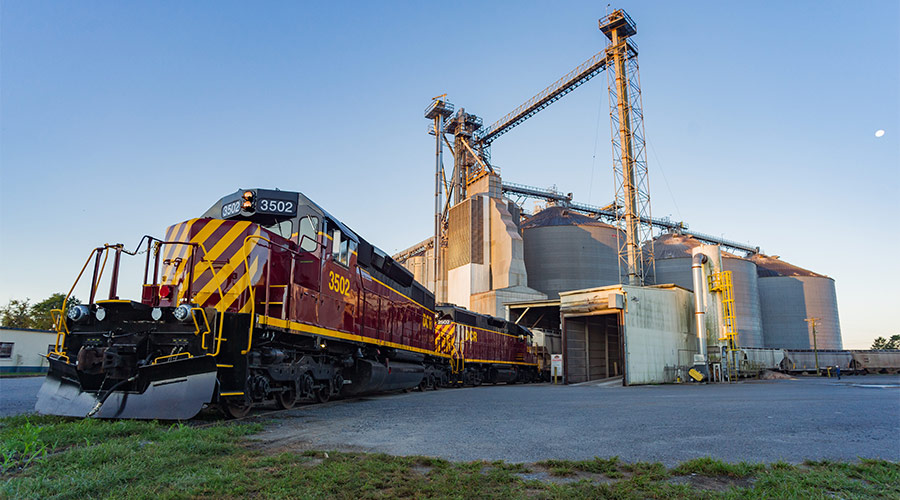For Delmarva Central, keeping in close contact with customers during a pandemic helps keep traffic steady
2/20/2021
By Julie Sneider, Senior Associate Editor
Even before March 11, 2020, when the World Health Organization declared COVID-19 a global pandemic, officials at the Delmarva Central Railroad (DCR) were already thinking about what they had to do to continue serving customers along the Delmarva peninsula on the U.S. East Coast.
A subsidiary of Carload Express Inc., the DCR operates 188 miles of track in Delaware, Maryland and Virginia. When it became clear that the coronavirus was going to have a major impact on the United States, the short line and its parent began discussing strategies to prevent or limit its spread among the railroad’s 45 employees, says Cliff Grunstra, DCR’s chief marketing officer.
“We started having everyone wear masks when they were around somebody,” he says. “We also started breaking up the way our crews — whether for maintenance, train or engine — reported to work, staggering when jobs were started to make sure that folks weren’t needlessly exposing other people.”
The railroad also implemented rules for sanitizing hands, rail equipment, vehicles and work space. Workers are required to wipe down equipment and surfaces they touch while on duty. Cleaning supplies are now available on locomotives. Social distancing practices are in place.
No matter what is happening with the virus, as an essential business the DCR still has carloads of commodities — primarily stone, agricultural products, propane and various chemicals — to deliver for its customers, most of which are also considered essential businesses.
As a result, “we really didn’t see any major softening in traffic volumes in 2020 specifically related to COVID,” he adds.
The only unanticipated, but noticeable, change in DCR’s traffic in the early weeks of the pandemic involved shipments of dried distillers grains (DDGs), which are used in chicken feed and are a byproduct of the ethanol manufacturing process. Because the peninsula is among the largest chicken poultry-producing areas in the United States, some commodities commonly shipped by rail are chicken feed ingredients.
 As a freight railroad, the DCR is considered an essential business during the pandemic — and most of its customers are, too. Delmarva Central Railroad/Carload Express Inc.
As a freight railroad, the DCR is considered an essential business during the pandemic — and most of its customers are, too. Delmarva Central Railroad/Carload Express Inc.“Ethanol production took a massive hit during COVID because gasoline production went way down when people stopped driving,” says Grunstra. “Then it became a chain reaction of events: The availability of DDGs completely dried up.”
And DDG traffic disappeared for several weeks.
“It was pretty interesting how fast that happened,” says Grunstra. “There are substitutes that chicken poultry companies can use for DDGs, so we probably benefited from some of those commodities — like soybeans — which picked up a little bit, but it wasn’t a complete offset.”
While “concerning,” the temporary halt to DDGs traffic wasn’t devastating, he says. Most other traffic has remained steady. The DCR’s No. 1 commodity moved is stone, which is necessary for any construction projects on the peninsula.
By 2020’s end, the railroad’s volume was about 1% above what Grunstra says he forecasted for the year. Staying in regular contact with DCR customers has been key.
“We were in direct contact with all of our customers immediately, asking them what they were seeing in their business, asking them if there was anything we could do to assist them and to let us know if there were any changes coming,” says Grunstra.
The hardest part of running a short line over the past 12 months? Remaining vigilant against a pandemic that will have lasted for more than a year before it’s over, Grunstra says.
But the lesson learned is how resilient the DCR team and its parent company have been.
“We responded in an efficient and effective manner to this bizarre occurrence,” he says. “We knew things would be tight, and we tightened things we knew we had control over. We took it seriously. The biggest takeaway for me was how quickly we responded to this, and it showed in our results.”


